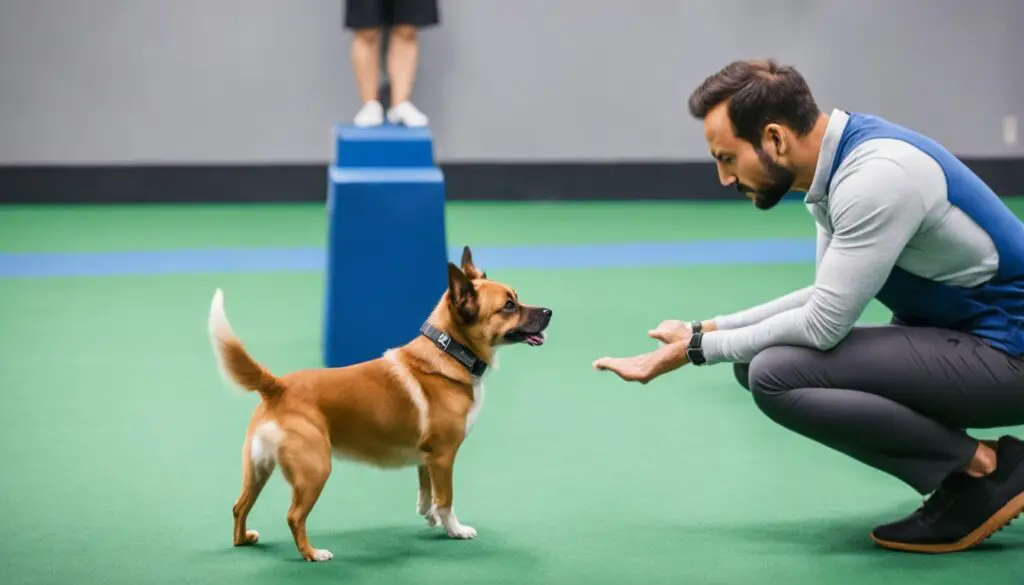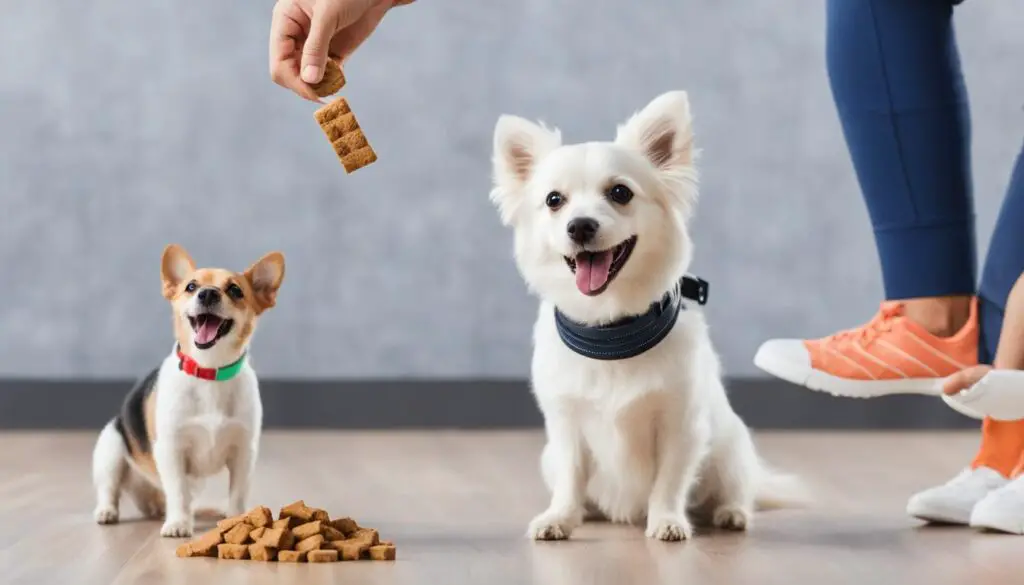Overcoming Training Challenges with Small Dogs

Training small dogs can be a rewarding but challenging task. Their small size and sometimes stubborn nature can make it difficult to teach them obedience and proper behavior. However, with the right strategies and techniques, these challenges can be overcome, and small dogs can become well-trained pets.
Understanding the specific behaviors and tendencies of small dog breeds is the first step in effectively training them. Different breeds have different characteristics that may influence their training process. By understanding these traits, trainers can tailor their approach, addressing specific behavior challenges and ensuring successful training.
Patience and consistency are key when it comes to training small dogs. They may take longer to learn commands and behaviors, so it’s important to remain patient and not get frustrated. Consistency in training methods is also crucial. Small dogs thrive on routine and repetition, so using the same commands and techniques consistently will help them understand what is expected of them.
Positive reinforcement techniques are highly effective for training small dogs. By rewarding desired behaviors with treats, praise, or playtime, trainers can motivate and encourage small dogs to repeat these behaviors. Positive reinforcement creates a positive association with training, making it more enjoyable for small dogs and increasing their willingness to learn.
Socialization and exposure to different environments are essential for small dogs. Exposing them to various situations, people, and animals from a young age helps them develop good behavior and manners. Gradual exposure to new experiences and positive interactions will help small dogs overcome fear or anxiety-related behaviors and become more confident.
Building a strong bond with your small dog is crucial for successful training. They are highly dependent on their owners and thrive on attention and affection. Spending quality time together, engaging in play and training sessions, and providing plenty of positive reinforcement will strengthen the bond between owner and dog, making the training process more effective and enjoyable.
Key Takeaways:
- Training small dogs can present unique challenges due to their size and sometimes stubborn nature.
- Understanding the specific behaviors and characteristics of small dog breeds is essential for effective training.
- Patience and consistency are crucial when training small dogs.
- Positive reinforcement techniques, such as rewards and praise, are highly effective for training small dogs.
- Socialization and exposure to different environments are important for small dogs to develop good behavior and confidence.
Understanding Small Dog Behavior
Small dogs have their own unique set of behaviors and tendencies that can greatly influence their training process. It is essential for trainers and owners to gain a thorough understanding of these behaviors in order to effectively train and manage small dog breeds. By recognizing the specific characteristics and traits associated with small dog breeds, trainers can tailor their approach to address behavior challenges and ensure successful training outcomes.
One important aspect to consider is that some small dog breeds may be more prone to barking or have a strong prey drive. For example, breeds such as Chihuahuas and Yorkshire Terriers are known for their tendency to bark more frequently compared to larger dog breeds. This behavior can be attributed to their alertness and protective nature. Understanding this inclination towards increased vocalization allows trainers to employ techniques that redirect the behavior or train them to bark on command.
“Recognizing the specific characteristics and traits associated with small dog breeds enables trainers to tailor their approach to address behavior challenges and ensure successful training outcomes.”
Additionally, certain small dog breeds may exhibit a strong prey drive due to their genetic heritage. Breeds such as Jack Russell Terriers and Dachshunds have a natural instinct to pursue small animals, which can present a challenge when it comes to off-leash training. Trainers must be aware of this behavior and implement training techniques that focus on impulse control and redirecting their attention towards appropriate activities.
Understanding small dog behavior also involves recognizing their temperament. Some small dog breeds may have a tendency to be more independent or stubborn compared to larger breeds. This can affect their responsiveness to training commands and require trainers to employ patience and persistence in their training approach. It’s important to avoid using harsh training methods and instead focus on positive reinforcement techniques to motivate small dogs and foster a cooperative learning environment.
Dog Training Tips for Small Dogs
When training small dogs, it’s crucial to keep in mind their unique behavior characteristics. Here are some tips that can help in the training process:
- Be patient and consistent: Small dogs may take longer to learn commands and behaviors, so it’s important to remain patient and consistent in your training efforts.
- Use positive reinforcement: Rewarding desired behaviors with treats, praise, or playtime can be highly effective in motivating small dogs and encouraging them to repeat the desired behavior.
- Understand breed-specific traits: Each small dog breed has its own distinct traits and tendencies, so tailor your training approach accordingly.
- Socialize your small dog: Expose them to different environments, people, and animals from a young age to help them develop good behavior and manners.
| Small Dog Breeds | Behavior Characteristics |
|---|---|
| Chihuahua | Alert, vocal, may be prone to barking |
| Yorkshire Terrier | Alert, energetic, may be prone to barking |
| Jack Russell Terrier | Energetic, strong prey drive |
| Dachshund | Curious, determined, may have a strong prey drive |
Understanding small dog behavior is the first step towards successful training. By acknowledging their unique traits, trainers can adapt their methods and effectively address behavior challenges. With patience, consistency, and a tailored training approach, small dogs can develop into well-behaved companions.
Patience and Consistency in Training
When it comes to training small dogs, patience and consistency are the two essential ingredients for success. Small dogs may take longer to learn certain commands or behaviors compared to larger breeds, so it’s important to remain patient and not get frustrated. Remember, Rome wasn’t built in a day!
Consistency in training methods is equally important. Small dogs thrive on routine and repetition, so using the same commands and training techniques consistently will help them understand what is expected of them. Stick to one consistent approach rather than switching between different methods, as this can confuse your furry friend.
During training sessions, it’s natural for small dogs to exhibit behaviors that might test your patience. They might not respond immediately or make mistakes along the way. But remember, training is a gradual process, and with time and perseverance, they will learn and improve.
“Training a small dog requires the perfect balance of patience and consistency. Dogs pick up on your emotions, so remaining calm and patient will set a positive tone for the training sessions.”
One effective way to cultivate patience is by adopting positive reinforcement techniques. Instead of focusing on what your dog did wrong, praise and reward them when they exhibit the desired behavior. This positive approach creates a happy and enjoyable training environment for your small dog.
Rome wasn’t built in a day, and neither is a well-trained small dog. Remember to be patient, consistent, and positive, and you’ll soon see the fruits of your training efforts!

Small Dog Training Tips
- Set realistic expectations: Understand that small dogs may require more time and effort to learn certain commands or behaviors.
- Short, frequent sessions: Keep training sessions short and exciting, around 5-10 minutes, to maintain your small dog’s focus and engagement.
- Use high-value treats: Small dogs are often highly motivated by food, so find treats that they find extra enticing to reward their good behavior.
- Practice in different environments: Gradually expose your small dog to various environments, both indoors and outdoors, to help them generalize their training to different settings.
- Be consistent with rules: Establish clear boundaries and consistently enforce them throughout your small dog’s training and daily life.
By incorporating these small dog training tips into your routine and maintaining patience and consistency, you’ll pave the way for a well-behaved and obedient furry companion.
Positive Reinforcement Techniques
When it comes to training small dogs, positive reinforcement techniques are highly effective. These methods, which involve rewarding desired behaviors with treats, praise, or playtime, provide a clear and motivating incentive for small dogs to learn and repeat the behaviors we want to reinforce. Unlike punishment-based training, positive reinforcement creates a positive association with training, making it more enjoyable for both the trainer and the dog.
Small dogs, with their unique personalities and sometimes stubborn nature, respond exceptionally well to rewards-based training methods. By using treats or favorite toys as positive reinforcement, trainers can capture the attention and cooperation of their small canine companions. This approach motivates small dogs to eagerly participate in training sessions and to consistently exhibit the desired behaviors, such as sitting, lying down, or walking on a leash.
In addition to treats and toys, verbal cues and praise play a crucial role in positive reinforcement training for small dogs. Offering words of encouragement, like “Good job!” or “Well done!”, helps reinforce the connection between the desired behavior and the positive consequences that follow. These favorable interactions strengthen the bond between trainer and dog and create a trusting and cooperative training environment.
It’s important to note that small dogs may have different preferences when it comes to rewards. Some may be more food-motivated, while others may respond better to playtime or verbal praise. Understanding what motivates your small dog and tailoring the rewards accordingly can significantly enhance training outcomes.
Overall, positive reinforcement techniques provide small dogs with the guidance and encouragement they need to succeed in their training. By utilizing rewards-based training methods, trainers can create a positive and enjoyable training experience for small dogs, helping them develop the skills and behaviors necessary to become well-mannered and obedient pets.

Comparison of Positive Reinforcement Techniques
| Technique | Description | Benefits |
|---|---|---|
| Treats | Using small, tasty treats as rewards for desired behaviors | – Highly motivating for food-motivated dogs – Can be easily carried during training sessions – Provides immediate reinforcement |
| Verbal cues | Using positive words and tone of voice to reinforce desired behaviors | – Creates a strong connection between behavior and praise – Reinforces verbal commands for future use – Can be used in various environments |
| Playtime | Using interactive play sessions as rewards for desired behaviors | – Appeals to dogs with high energy levels – Provides mental and physical stimulation – Strengthens the bond between trainer and dog |
Socialization and Exposure to Different Environments
Socialization plays a critical role in shaping the behavior and manners of small dogs. It is essential to expose them to various environments, people, and other animals from a young age to ensure they develop the necessary social skills. By gradually introducing small dogs to new experiences and positive interactions, trainers can help them overcome fear or anxiety-related behaviors and become more confident and comfortable in different situations.
One crucial aspect of socializing small dogs is exposing them to other dogs. Learning how to behave around other dogs is essential for their overall development and well-being. However, it’s important to introduce them to well-behaved and friendly dogs to ensure positive social interactions.
Exposure training is an effective technique to help small dogs learn how to interact appropriately with other dogs. This involves gradually increasing the level of exposure to other dogs in controlled environments. It’s essential to start with calm and well-mannered dogs and then progress to more lively and energetic ones as the small dog becomes more comfortable.
During exposure training, it’s important to observe and manage the small dog’s behavior around other dogs. If the small dog displays signs of fear or aggression, it’s crucial to address these behaviors through positive reinforcement and redirection. Providing rewards for calm and friendly behavior will help the small dog associate positive experiences with interacting with other dogs.
“Proper socialization is crucial for small dogs to develop good behavior around other dogs. Gradual exposure and positive reinforcement can help them overcome fear or anxiety-related behaviors.”
The table below provides additional tips on socializing small dogs and ensuring positive experiences during exposure training:
| Tips for Socializing Small Dogs |
|---|
| Start socialization early, ideally during the puppy stage. |
| Expose small dogs to a variety of environments, such as parks, playgrounds, and busy streets. |
| Introduce small dogs to different types of people, including adults, children, and individuals wearing hats or glasses. |
| Gradually expose small dogs to other dogs in controlled environments. |
| Monitor small dog behavior around other dogs and address any fear or aggression through positive reinforcement and redirection. |
| Provide plenty of positive experiences and rewards for calm and friendly behavior around other dogs. |
Building a Strong Bond with Your Small Dog
Training your small dog is not just about teaching them commands and behaviors; it’s also about building a strong bond between you and your furry companion. Small dogs are known for their loyalty and dependence on their owners, making the owner-dog bond crucial for successful training. Here are some tips to help you strengthen your relationship with your small dog:
1. Spending Quality Time Together: Make sure you set aside dedicated time to bond with your small dog. Engage in activities that both of you enjoy, such as playing games, going for walks, or simply cuddling on the couch. This time together will not only deepen your connection but also provide opportunities for training and positive reinforcement.
2. Engage in Play and Training Sessions: Playtime is not only fun for your small dog but can also be a valuable training opportunity. Incorporate interactive toys and puzzle games into your play sessions to stimulate their mind and promote bonding. Additionally, regular training sessions using positive reinforcement techniques will strengthen their understanding of commands and improve their overall behavior.
3. Provide Plenty of Positive Reinforcement: Positive reinforcement is key to building a strong bond with your small dog. When they exhibit good behavior or successfully follow a command, reward them with treats, praise, and affection. This positive association will not only motivate them to repeat the desired behavior but also create a sense of trust and mutual understanding between you and your dog.
By focusing on bonding with your small dog, you create a solid foundation for successful training. Remember to be patient, consistent, and understanding throughout the process. With time and dedication, you will not only have a well-trained small dog but also a loyal and loving companion.
FAQ
What are some common challenges when training small dogs?
Small dogs can present unique challenges due to their small size and sometimes stubborn nature. Their behavior may be influenced by specific characteristics of small dog breeds, such as barking or prey drive, which can affect the training process.
How can I overcome these training obstacles with my small dog?
Overcoming training challenges with small dogs requires patience and consistency. Small dogs may take longer to learn commands, so remaining patient and consistent in training methods is crucial. Positive reinforcement techniques, such as rewarding desired behaviors with treats or praise, are highly effective for training small dogs.
How can I understand my small dog’s behavior better?
Understanding small dog behavior is important for effective training. Familiarize yourself with the specific characteristics of your small dog breed and how they may impact their behavior. This will allow you to tailor your training approach to address specific behavior challenges.
What training tips can help me with my small dog?
Patience and consistency are key when training small dogs. They thrive on routine and repetition, so using the same commands and training techniques consistently will help them understand what is expected of them. Positive reinforcement, such as rewards and praise, is highly effective in motivating and encouraging small dogs to repeat desired behaviors.
How important is socialization for small dogs?
Socialization is crucial for small dogs to develop good behavior and manners. Expose them to different environments, people, and other animals from a young age to help them become more confident and comfortable in various situations. Gradual exposure and positive interactions will help small dogs overcome fear or anxiety-related behaviors.
How can I build a strong bond with my small dog?
Building a strong bond with your small dog is essential for successful training. Small dogs are highly dependent on their owners and thrive on attention and affection. Spend quality time together, engage in play and training sessions, and provide plenty of positive reinforcement to strengthen the bond between owner and dog.



